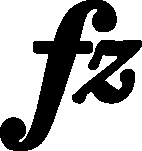



The notation of the four accent/diminuendo marks in bar 646 and 648-650 significantly differs both between particular bars within FE and between the sources. The marks differ in size, ranging from a short accent to a half-bar  , and placement, over the L.H., under the R.H. or between the parts of both hands. According to us, it is easy to identify the reason for the difference in size – such discrepancies appear very often when Chopin employs long accents. Taking into account the fact that the length of marks differs in pairs of identical bars (bar 646 and 648 as well as 649-650) and that we see identical marks in similar yet not identical contexts, we conclude that the engraver probably emphasised differences that were considered insignificant inaccuracies in the autograph. On the basis thereof, in the main text we give long accents in all places, since they explain the image of the sources best and correspond to the naturally interpreted course of music.
, and placement, over the L.H., under the R.H. or between the parts of both hands. According to us, it is easy to identify the reason for the difference in size – such discrepancies appear very often when Chopin employs long accents. Taking into account the fact that the length of marks differs in pairs of identical bars (bar 646 and 648 as well as 649-650) and that we see identical marks in similar yet not identical contexts, we conclude that the engraver probably emphasised differences that were considered insignificant inaccuracies in the autograph. On the basis thereof, in the main text we give long accents in all places, since they explain the image of the sources best and correspond to the naturally interpreted course of music.
The placement of the marks poses a more difficult problem, since the accents may be reasonably combined both with the chords in the L.H. and the peaks of the passages in the R.H. However, in this case we also come to the conclusion that the distinctly different positions visible in FE may result from random differences in the notation of [A], which the engraver tried to interpret believing that the marks must refer to one of the hands. Taking into account the fact that two out of four chords are provided with  marks, both the peaks of the passages in the R.H. and the remaining two chords require a form of accentuation; therefore, in the main text we suggest accents in the middle between the parts of both hands.
marks, both the peaks of the passages in the R.H. and the remaining two chords require a form of accentuation; therefore, in the main text we suggest accents in the middle between the parts of both hands.
Compare the passage in the sources »
category imprint: Editorial revisions
issues: Long accents, Placement of markings
notation: Articulation, Accents, Hairpins


